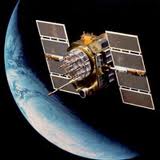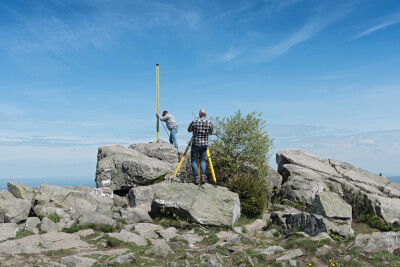Many of us in the laser scanning industry were in the GPS industry or some industry using GPS when we first discovered laser scanning. Perhaps this is why you hear laser scanning compared so often to GPS when we discuss the future directions that scanning hardware and software might take. I will be the first to admit that I viewed laser scanning this way when I first saw it. To me, scanning was the first thing that I had found (since GPS) that could fundamentally change the way that geographic information was collected. To add to that sense of “this is what’s next,” once I started meeting many of the others involved in this industry I realized that many of them were coming from positions at companies that were leaders in GPS hardware and software.
I had the privilege of dining with one such person (Dr. Erwin Frei) a few weeks back and he mentioned the similarities to explain his interest in joining P3D Systems last year. I’m paraphrasing here, but essentially his point was that GPS moved from slow to fast then from static to mobile and finally it was integrated into everyday objects. He sees LiDAR taking the same path, so he has thrown his hat in the ring with P3D Systems as they develop a terrestrial mobile scanning solution. It’s hard to disagree with him. The parallels are certainly there; so is the need.
However, there are some definite differences. I was pretty early to the GPS game as well and I only remember getting a good 10-12 years in before “GPS only” service providers were no more. The service was integrated into total stations and backpack units were everywhere. Outfitting a GPS field crew went from >$100,000 to <$30,000 in under a decade! Now my cellphone can get better standalone results than my first GPS unit. However, while the price of scanners has certainly come down from the early Cyrax days, they have remained more stable than anything not made by Apple over the past 10 years or so. Faro certainly put a dent in that and many of the major hardware manufacturers decided to find something to offer at the $50,000 price point, but the “top of the line” price has remained above six figures.
Another difference is the pace of solutions being introduced to the market. In GPS, I left conferences every year or two with a totally new field methodology. Static for hours at a time (for a single point!) was the norm. Suddenly, we could use fast-static and get data that was just as good in 15 minutes or so. Then we set up our own base station and we didn’t have to recover monuments anymore. Next thing I knew there were CORS (Continually Operating Reference Station) datasets from points all over the country freely available online (getting the internet was a pretty interesting advance as well…).
We are not seeing this level of advancement in scanning. Some of the problems that I hear new customers mention today are the same ones that I called Lonnie Price about back in 2005. Why is this?
Although we harp on the parallels, the fact is that GPS and lidar are very different technologies. So are the support structures upon which they are based. Most of the advancements I mentioned in the preceding paragraph were possible because the US Government was constantly launching new GPS satellites (that they insisted upon calling “Service Vehicles” for some reason). These additional data streams gave me more options with the equipment I already had. The government was also responsible for the CORS network. Then they turned off the “Selective Availability,” essentially unscrambling the GPS signal which greatly aided everyone in using GPS. Without the government picking up quite a bit of the tab for developing, enlarging, and maintaining the infrastructure upon which we are working, the pace of development was bound to be slower than it was with GPS.
So, after 657 words on the subject where does that lead us? I’m going to call it a glass half full. I think we all learned some important lessons with GPS. I doubt that any of us not retiring in the next year or so believes that we will be working with these same tools for the remainder of our career(s). We all expect change and I think most of us are actively on the lookout for it on a daily basis. But, if a slower pace of change means that I’ve got more time to collect an ROI for the hardware/software/training that I currently have, I am fine with that.






